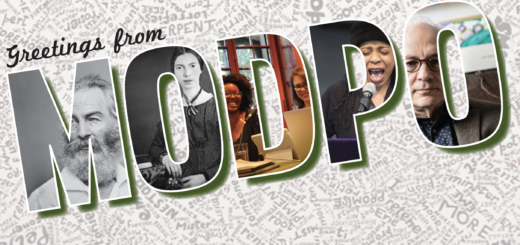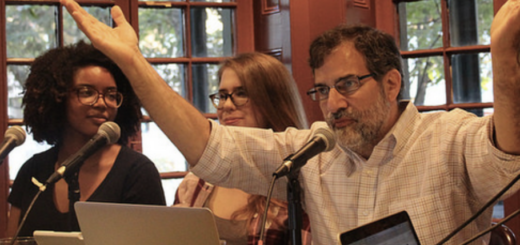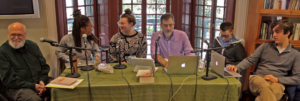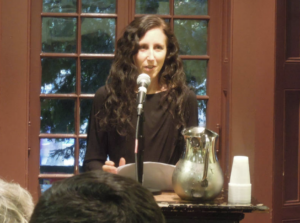read Al Filreis on canto 8 of “Song of Myself”
Recently we added a short commentary on canto 8 of “Song of Myself” to the main week 1 syllabus. Here is that brief essay:
*
In canto 8 we encounter the poem’s first urban list. It’s exciting! Enemies meet, and curse each other, and fight—yet no action verb is to be found in the vicinity! How did that happen?
 Even the prefatory verbs (“sleeps” is the first—in “little one sleeps”) present mildest action. Prior to the pure catalogue of the famous fourth stanza, we barely encounter gestures as those observed are placed in a scene and the observer needs little syntactical initiative to do his seeing: “sleeps,” “silently brush away,” “turn aside,” “peeringly view.” This requires minimal labor and (a new sense of) urban work begins to seem the section’s main topic. The work of cataloguing implies its alliance with labor, in every senses: occupation, precarity, the People, birthing, the trades, struggle.
Even the prefatory verbs (“sleeps” is the first—in “little one sleeps”) present mildest action. Prior to the pure catalogue of the famous fourth stanza, we barely encounter gestures as those observed are placed in a scene and the observer needs little syntactical initiative to do his seeing: “sleeps,” “silently brush away,” “turn aside,” “peeringly view.” This requires minimal labor and (a new sense of) urban work begins to seem the section’s main topic. The work of cataloguing implies its alliance with labor, in every senses: occupation, precarity, the People, birthing, the trades, struggle.
Canto 8 is soon a sound poem, reporting verblessly its enumeration of things heard before seen. Blab, talk, clank, clink, pelting, hurrahs, oaths, police barking orders, groans, exclamations, vibrating speech, howls. Whitman’s speaker sees, yes. But it’s not so much that he views or observes; rather, he “minds” what he hears. To mind here is passive but nonetheless powerful cognition, a blissful state everywhere for Whitman in “Song of Myself.” So much conflicting and simultaneous noise—at a wide diversity of sound registers—presents a “show or resonance” of social humanity.
To mind is also to protect, look after. From any conventional perspective, our poet has not been very successful at minding this city, if he had longed to keep it from danger. Not so secretly, despite his minding, he seeks the trouble that he avers is natural to the urban scene. And so I think of this section of the poem as an urban pastoral. “The blab of the pave” might as well be a babbling brook, that supposedly prelinguistic source. Yet “speech is always vibrating here.” Poets are supposed to take walks in a wood to hear what is always already sounding there, and then turn them into words. Amazingly, though, the pave provides just such inherent presence. “[H]owls restrain’d by decorum” are howlings nonetheless. What is left of decorum there? If the origin of Allen Ginsberg’s “Howl” is here—and it seems quite likely—then should we not read “Howl” as an American pastoral getting its start on this crazy throbbing boulevard? No restraint can succeed among the aural discordances of the city street. Active listening is a faux passivity. Ginsberg began with that particular paradoxical Whitmanian stance.
The “living and buried speech” of the pave in canto 8 is crucially meta-poetic, for it is the sound of the poem itself. The poem is one of those that does precisely what it talks about. The blab of the pave is the poem. Great poems hence will blab, respecting and gathering others’ labor rather than requiring, via the constraints of traditional poetic preparation, some great talented effort to discern it. I think of this canto as the first quasi-nonintentional chance operation. Notes toward an ambient poetics, and a guide. Come; listen; mind; depart.







